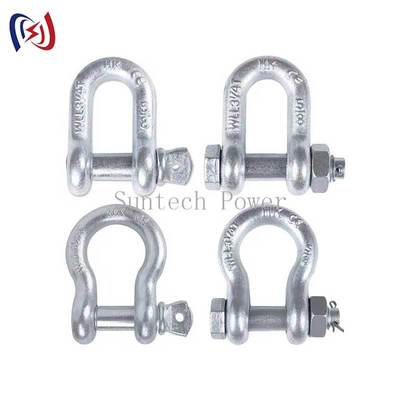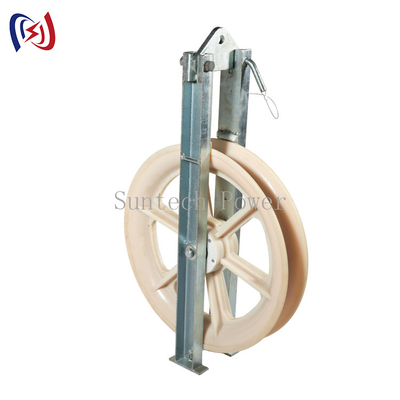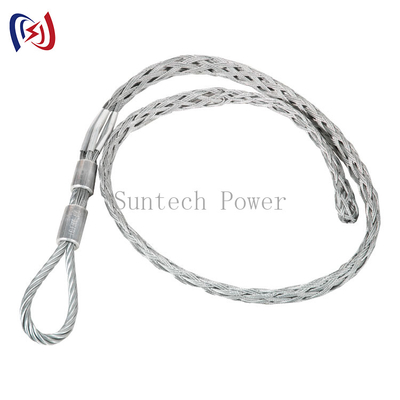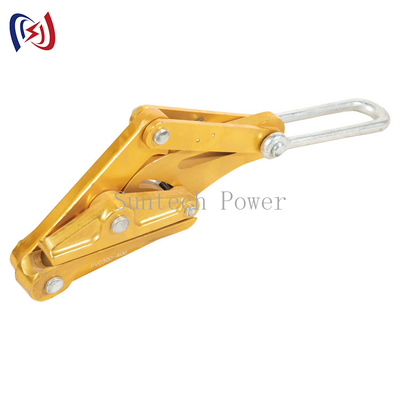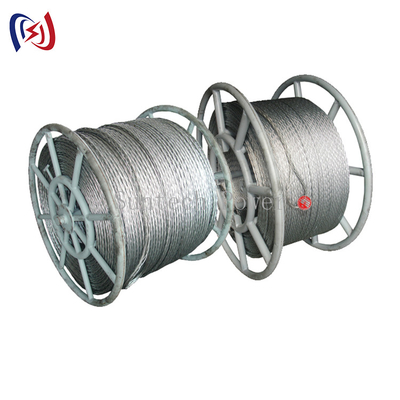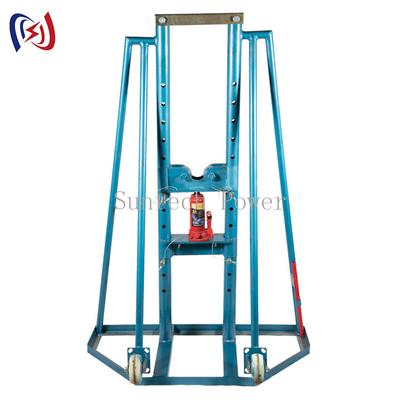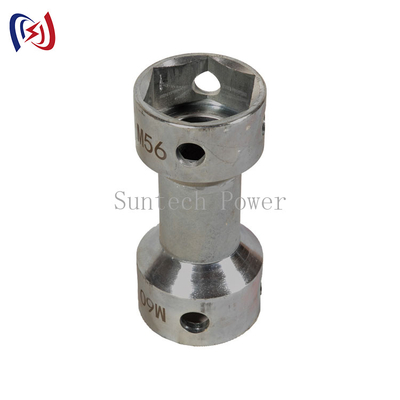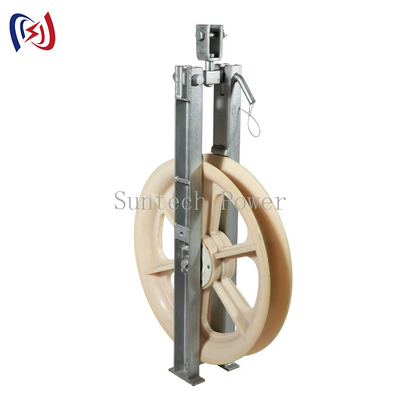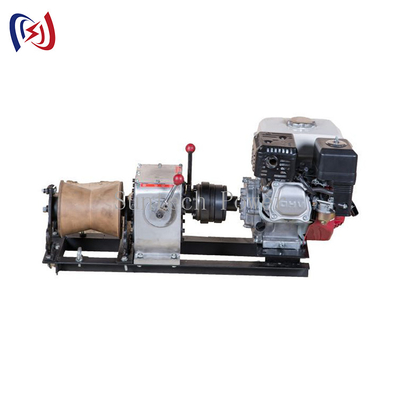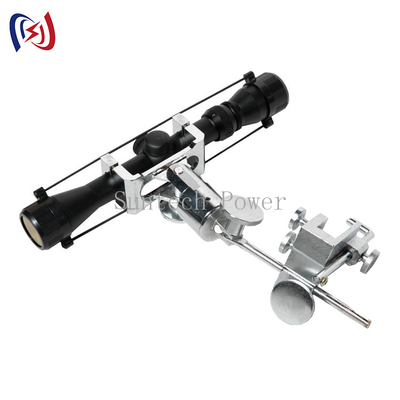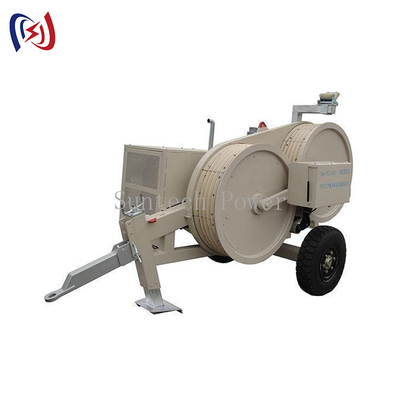Introduction to Insulated Tighteners
In the world of electrical maintenance and utility work, safety and efficiency are paramount. This is where insulated tighteners come into play - specialized tools designed to provide secure cable tensioning while eliminating electrical hazards. Unlike traditional wire rope pullers, insulated tighteners feature non-conductive fiberglass handles and corrosion-resistant, high-tension webbing that replaces conventional steel cables.
These innovative tools are particularly valuable for utility workers, telecom technicians, and electrical maintenance crews who regularly work on live lines or in proximity to energized equipment. The insulated design significantly reduces the risk of electrical accidents while maintaining the strength and durability needed for demanding tensioning applications.
For professionals seeking reliable insulated tensioning solutions, our product line offers various models suitable for different working conditions and load requirements. Explore our full range of insulated tighteners to find the perfect match for your specific needs.
Understanding Insulated Tightener Technology
The Science Behind Insulation
The core innovation of insulated tighteners lies in their carefully selected materials. The handles are constructed from high-grade fiberglass, a material renowned for its excellent dielectric properties. Fiberglass provides exceptional electrical resistance, typically rated for voltages up to 100kV, while remaining lightweight and durable enough for field use.
The webbing component represents another significant advancement over traditional steel cables. Made from synthetic fibers like ultra-high molecular weight polyethylene (UHMWPE) or aramid, these straps combine impressive tensile strength (often exceeding 5 tons) with complete electrical insulation. Unlike metal cables that can fray or corrode, the synthetic webbing resists environmental degradation while maintaining flexibility in cold conditions.
Key Components and Their Functions
A typical insulated tightener consists of several critical components:
- Fiberglass insulation handles: Provide safe gripping points away from the tensioned line
- Synthetic tensioning webbing: Replaces steel cable with an equally strong but non-conductive alternative
- Ratcheting mechanism: Allows precise tension adjustment and secure locking
- Load-bearing hooks: Engineered for secure attachment without compromising insulation
- Protective coatings: Special treatments that resist UV damage and chemical corrosion
Each element works in harmony to create a tool that's as safe as it is effective, providing utility workers with confidence when working near energized equipment.
Applications Across Industries
Electrical Utility Maintenance
Insulated tighteners have become indispensable in power distribution systems. Line workers use them for:
- Sag adjustment in overhead power lines
- Temporary repairs during outages
- Installation of new conductors
- Maintenance of transformer connections
The non-conductive nature allows work on energized lines up to certain voltage ratings, significantly reducing downtime compared to traditional methods that require complete de-energization.
Telecommunications Infrastructure
Telecom technicians benefit from insulated tighteners when:
- Tensioning fiber optic and coaxial cables
- Installing aerial communication lines
- Maintaining tower guy wires
- Repairing storm-damaged infrastructure
The corrosion-resistant properties make these tools particularly valuable in coastal regions where salt spray accelerates metal degradation.
Renewable Energy Installations
In solar and wind farm construction, insulated tighteners prove useful for:
- Tensioning array wiring in photovoltaic systems
- Securing wind turbine cabling
- Maintaining proper conductor sag in collector systems
- Installing overhead service drops to renewable facilities
Discover how our insulated tighteners can enhance safety and efficiency in your specific application by browsing our product catalog today.
Selecting the Right Insulated Tightener
Load Capacity Considerations
Choosing the appropriate capacity is crucial for both safety and performance. Our product line offers models ranging from:
- Light-duty (500kg-1 ton): Ideal for communication lines and small conductors
- Medium-duty (1-3 tons): Suitable for most distribution voltage applications
- Heavy-duty (3-5+ tons): Designed for transmission lines and demanding installations
Always select a tightener rated for at least 1.5 times your expected working load to account for dynamic forces and safety margins.
Voltage Rating and Safety Standards
Different applications require specific voltage protection:
- Class 0 (1kV): Basic insulation for low-voltage work
- Class 1 (10kV): Common for distribution voltage maintenance
- Class 2 (30kV): Suitable for most overhead line work
- Class 3 (100kV): Required for transmission voltage applications
All our insulated tighteners meet or exceed relevant international standards such as IEC 60900 and ASTM F711, ensuring reliable performance in critical applications.
Environmental Factors
Consider these environmental aspects when selecting your tightener:
- Temperature range: Our webbing maintains flexibility from -40°C to +80°C
- Chemical exposure: Special coatings resist oils, acids, and alkalis
- UV resistance: Critical for prolonged outdoor use
- Moisture protection: Prevents dielectric strength degradation
For help determining the perfect insulated tightener for your working conditions, consult our product experts who can guide you to the ideal solution.
Maintenance and Safety Best Practices
Routine Inspection Procedures
To ensure ongoing safety and performance:
- Visually inspect webbing for cuts, abrasions, or chemical damage
- Check fiberglass handles for cracks or compromised surfaces
- Verify smooth operation of ratcheting mechanisms
- Test dielectric integrity annually with appropriate equipment
- Examine all load-bearing hardware for wear or deformation
Proper Storage and Handling
Extend your tool's service life with proper care:
- Store in a dry, temperature-controlled environment
- Keep away from direct sunlight when not in use
- Clean webbing with mild soap and water after exposure to contaminants
- Avoid contact with sharp edges that could damage fibers
- Hang rather than fold to prevent creasing of webbing
When to Retire Your Tightener
Replace your insulated tightener when you notice:
- Fraying or broken fibers in the webbing
- Visible cracks in fiberglass components
- Stiff or difficult-to-operate mechanisms
- Any doubt about dielectric integrity
- After any significant overload incident
Regular maintenance ensures your tools remain safe and effective throughout their service life. Visit our website to explore replacement options when your current tightener reaches retirement age.
The Future of Insulated Tensioning Technology
Emerging Material Innovations
The insulated tightener industry continues to evolve with:
- Nanocomposite coatings for enhanced dielectric strength
- Self-monitoring fibers that indicate wear or damage
- Hybrid materials combining strength and conductivity monitoring
- Biodegradable webbing options for reduced environmental impact
Smart Features on the Horizon
Future developments may include:
- Integrated load monitoring sensors
- Wireless connectivity for maintenance tracking
- Automated tension adjustment systems
- Augmented reality interfaces for precision work
Sustainability Initiatives
Manufacturers are focusing on:
- Recyclable material compositions
- Extended product lifespans
- Reduced manufacturing energy requirements
- Closed-loop material recovery programs
Stay ahead of industry advancements by regularly checking our product updates for the latest in insulated tensioning technology.
Conclusion: Making the Safe Choice
Insulated tighteners represent a significant safety advancement in electrical and utility work, offering reliable tensioning capability without the electrical hazards of traditional metal tools. By understanding the technology, proper selection criteria, and maintenance requirements, professionals can significantly enhance worksite safety while maintaining operational efficiency.
Whether you're working on power distribution systems, telecommunications infrastructure, or renewable energy installations, choosing the right insulated tightener for your specific needs is an investment in both safety and productivity. Our comprehensive product line offers solutions for virtually any application, with the quality and reliability that professionals demand.
For more information on how insulated tighteners can benefit your operations or to explore our full product range, we invite you to visit our website and discover the perfect tensioning solution for your needs today.

 Your message must be between 20-3,000 characters!
Your message must be between 20-3,000 characters! Please check your E-mail!
Please check your E-mail!  Your message must be between 20-3,000 characters!
Your message must be between 20-3,000 characters! Please check your E-mail!
Please check your E-mail! 
